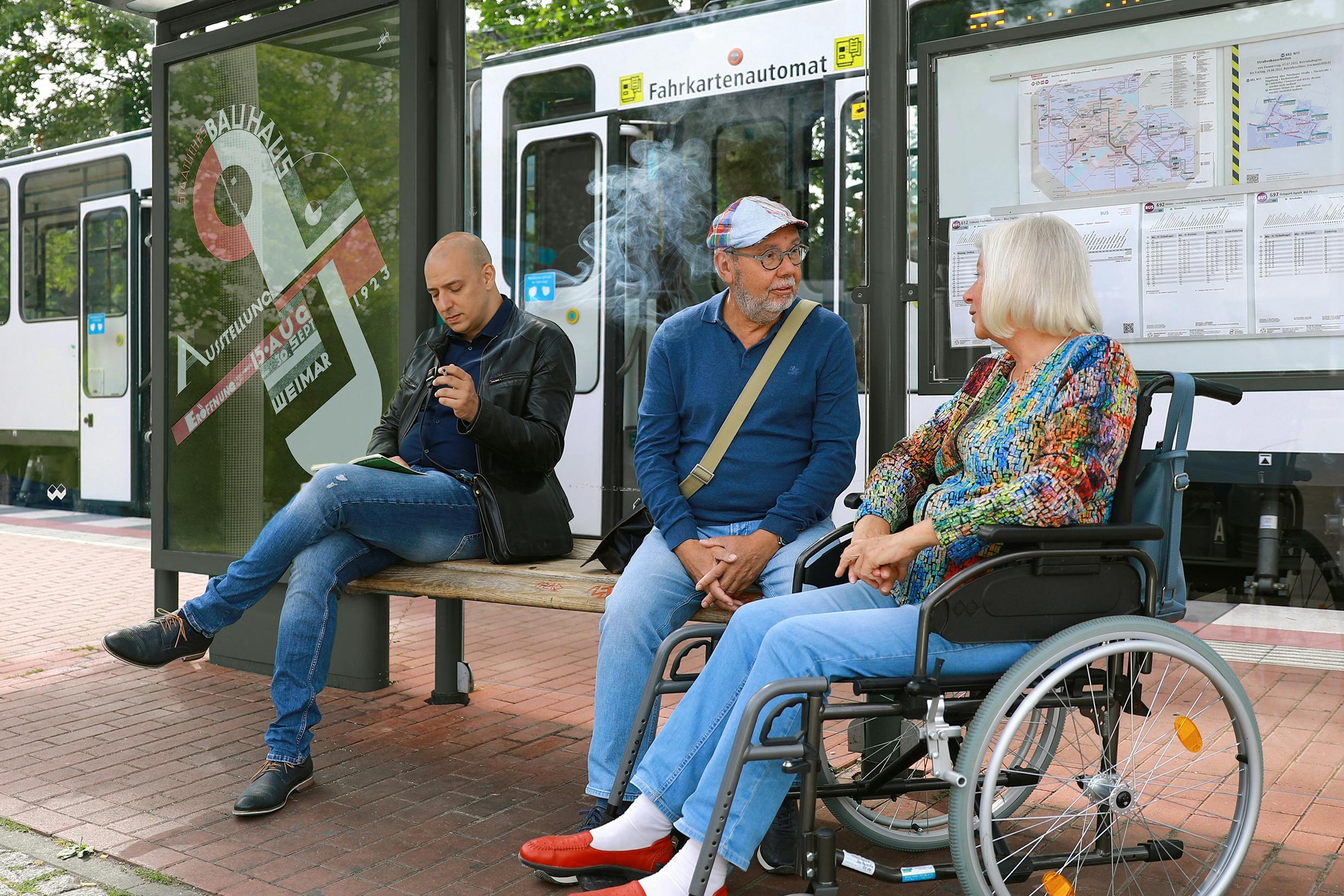Accessible Transportation Services: Beyond Handicap Parking Spaces

When we talk about accessibility for individuals with disabilities, we often focus on physical accommodations such as ramps and designated parking spaces.
While these are crucial elements, true accessibility goes beyond the confines of parking lots. Accessible transportation options are vital for ensuring that people with disabilities can navigate their communities independently and participate fully in society.
Today we’re exploring a variety of accessible transportation services and solutions that go beyond traditional handicap parking spaces.
1. Accessible Transportation Services
Accessible transportation services are specialized modes of transportation designed to accommodate individuals with disabilities.
These services may include paratransit, wheelchair-accessible vans, and door-to-door transportation options. Accessible transportation services provide a lifeline for individuals who may have difficulty using traditional public transportation or driving independently.
2. Disability-Friendly Transportation
Disability-friendly transportation refers to transportation options that are designed with the needs of individuals with disabilities in mind, ensuring safe and comfortable travel experiences.
This may include features such as low-floor buses, priority seating, audio and visual announcements, and tactile signage to assist individuals with visual or hearing impairments.
Disability-friendly transportation goes beyond mere compliance with accessibility regulations; it fosters a culture of inclusivity and respect for diversity. Disability-friendly transportation promotes independence, dignity, and equal access to transportation services for individuals with disabilities, contributing to a more accessible and inclusive society for all.
3. Wheelchair-Accessible Transportation
Wheelchair-accessible transportation is essential for individuals who use wheelchairs or other mobility aids.
These specialized vehicles are equipped with ramps or lifts and securement systems to safely accommodate wheelchair users, allowing them to board and disembark easily.. Whether it’s buses, vans, or taxis, wheelchair-accessible transportation options enable individuals to travel to work, school, medical appointments, and social activities with ease.
Accessible transportation removes barriers to mobility, allowing wheelchair users to participate fully in their communities and live active, fulfilling lives.
4. Accessible Public Transit Options
Many cities offer accessible public transit options to accommodate individuals with disabilities.
These options include features such as low-floor buses, ramps or lifts for wheelchair access, priority seating, and audible announcements. Accessible public transit ensures that individuals with disabilities can travel to work, school, medical appointments, and recreational activities without barriers.
Accessible public transit options contribute to building more inclusive communities where everyone can participate fully and contribute to society!
5. Transportation for People with Disabilities
Transportation for people with disabilities encompasses a wide range of specialized services and solutions tailored to meet the unique needs of individuals with disabilities.
These services may include accessible public transit options, wheelchair-accessible vehicles, and paratransit services. Transportation for people with disabilities aims to provide safe, reliable, and dignified transportation options that enable individuals to travel independently and participate fully in their communities.
By addressing barriers to transportation access, such as physical obstacles and lack of accommodation, these services empower people with disabilities to live active and engaged lives, fostering greater inclusivity and equality in society.

6. Mobility Assistance Services
Mobility assistance services offer support and assistance to individuals with disabilities who may require additional help with transportation.
These services may include assistance with door-to-door transportation, boarding and disembarking vehicles, navigating public transit, arranging accessible transportation options, and providing mobility aids such as wheelchairs or scooters. Trained staff members provide personalized assistance tailored to the needs of each passenger, ensuring a safe and comfortable travel experience.
Mobility assistance services ensure that individuals with disabilities can travel with confidence and independence.
7. Accessible Ridesharing Services
Ridesharing services have become increasingly popular in recent years, offering convenient and flexible mobility solutions at the touch of a button.
Many ridesharing companies now offer accessible options for individuals with disabilities, including wheelchair-accessible vehicles, trained drivers who are equipped to assist passengers with disabilities, and assistance with boarding and disembarking. Accessible ridesharing apps also allow users to request rides with specific accessibility requirements, such as wheelchair ramps or extra assistance.
Accessible ridesharing services provide a flexible and convenient transportation solution for individuals with disabilities!
8. Disabled Transportation Solutions
Disabled transportation solutions encompass a wide range of services and resources designed to meet the transportation needs of individuals with disabilities.
This may include accessible transportation options, specialized equipment and technology, and advocacy for improved transportation access. Disabled transportation solutions aim to address the barriers that individuals with disabilities may face when accessing transportation and ensure that everyone has equal opportunities to travel.
9. Accessible Transportation for Seniors
Accessible transportation options are not only essential for individuals with disabilities but also for seniors who may have mobility limitations, making driving or using traditional transportation options challenging.
Many seniors rely on accessible transportation services to access medical appointments, grocery stores, social activities, door-to-door transportation, assistance with boarding and disembarking, and accommodations for mobility aids such as walkers or wheelchairs.
Accessible transportation for seniors ensures that older adults can access essential services, attend medical appointments, and maintain their independence and quality of life as they age.
10. Barrier-Free Transportation Options
Barrier-free transportation options aim to create environments that are accessible and inclusive for individuals with disabilities. These options go beyond traditional accommodations to remove physical, cognitive, and sensory barriers that may hinder accessibility.
This may include features such as accessible boarding ramps, widened doorways, audio and visual announcements, and tactile signage to assist individuals with visual or cognitive impairments. Additionally, trained staff provide assistance and support to passengers with disabilities, ensuring that everyone can travel safely and comfortably.
Barrier-free transportation options promote inclusivity and equality, allowing individuals with disabilities to navigate their surroundings with independence and dignity.
***
Accessible transportation options are essential for ensuring that individuals with disabilities can lead independent, active, and fulfilling lives. By expanding beyond traditional handicap parking spaces and embracing a variety of accessible transportation services and solutions, communities can create inclusive environments where everyone has equal opportunities to travel and participate fully in society.
It’s essential to continue advocating for improved transportation access and to prioritize the needs of individuals with disabilities in transportation planning and policy-making. Together, we can create a more accessible and inclusive world for all.
Need more information on disabled parking in the US? From ADA parking requirements Illinois to understanding handicap parking violations Washington, we’ve covered a ton of detailed topics on the Dr Handicap blog. Check it out today!
Featured image Ernst-Günther Krause (NID) on Pexels.com.